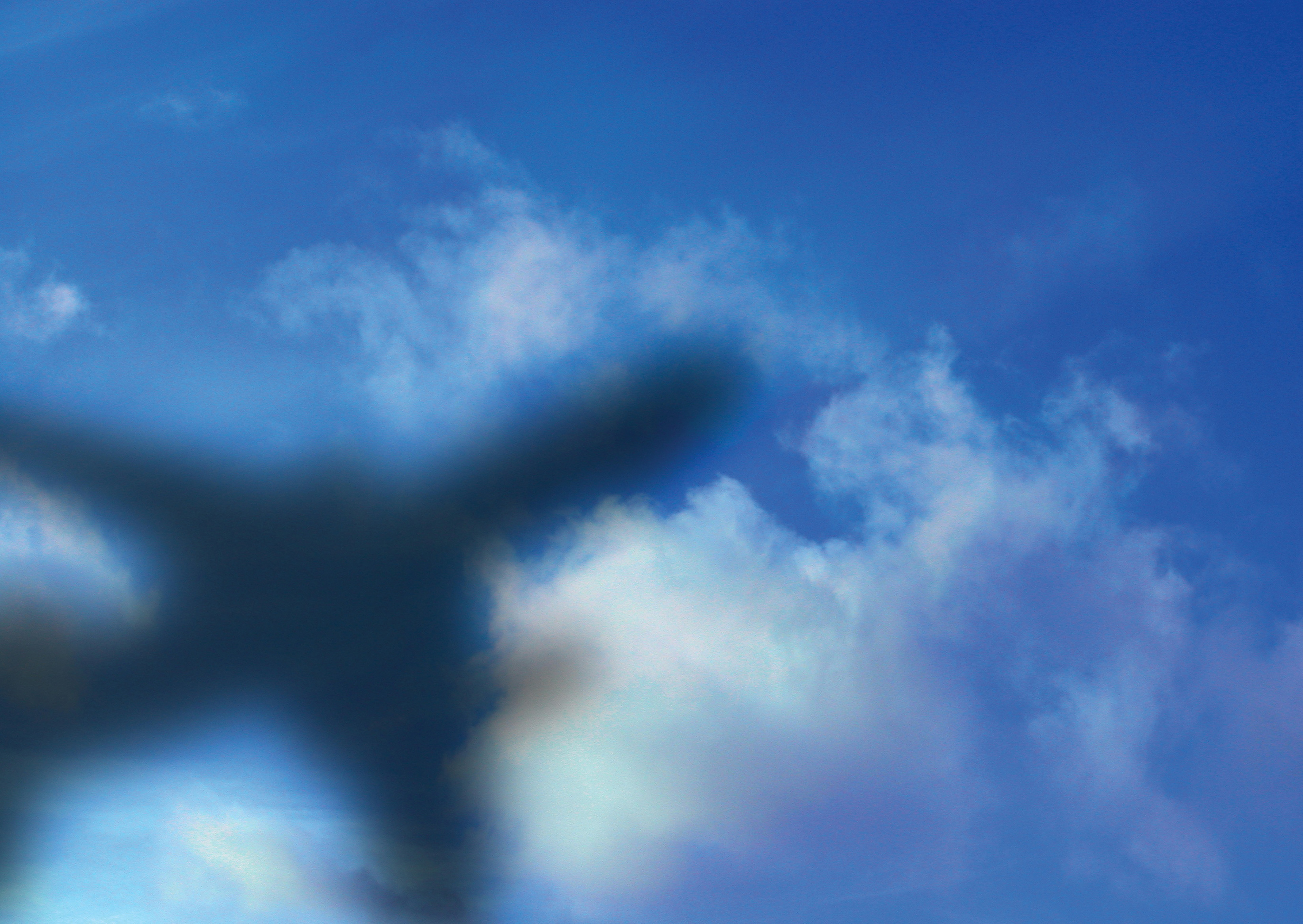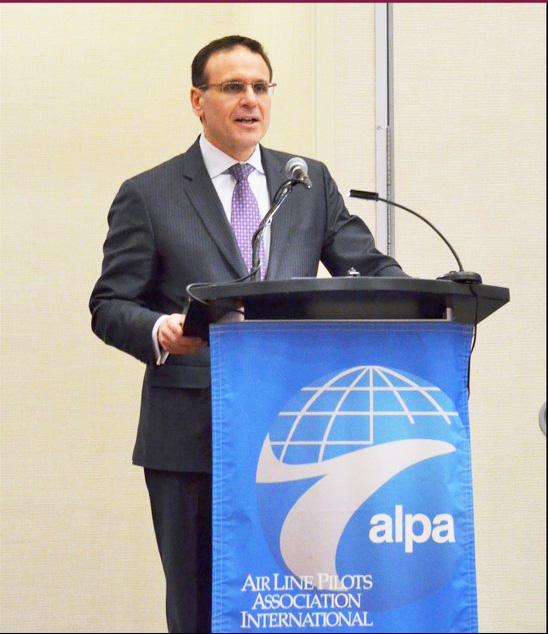Taking Flight: Senator Housakos Talks Air Transport With Pilots

Planes aren’t the only thing soaring at Toronto’s main airport.
“Pearson International Airport is the most expensive airport in the world at which to land a plane,” Senator Leo Housakos told members of the Air Line Pilots Association — the world’s largest pilots union — at a recent conference in Ottawa.
Expensive airports mean expensive plane tickets — and the chance Canadians might seek flights elsewhere.
So-called cross-border leakage, what Senator Housakos styled “plane drain,” means less commercial revenue for the industry and less tax revenue for all levels of government.

Senator Housakos sat on the Senate Committee on Transport and Communications in 2013, helping to write a report called One Size Doesn’t Fit All: The Future Growth and Competitiveness of Canadian Air Travel that addressed this very issue.
Airports are the lifelines of Canada’s economy, the report found. Canadian airports generate over $45 billion in economic activity and provide 200,000 jobs across the country.
“We need to support our airports as economic spark plugs instead of toll booths,” the Senator said.
Customers are saddled with the cost of various government taxes and fees. The main cost is rent.
“The $3 billion in rent paid since 1992 exceeds the value of the assets,” the Senator indicated.
“Let’s transfer federally-owned airports to the airport authorities that operate them.”
Other potential fixes include bringing together public and private stakeholders to establish more effective review mechanisms, as well as opening up the Canadian market to foreign competition.
More money should also be spent on actual infrastructure — like runways — than on fancy new terminals.
Infrastructure is most lacking in Canada’s north.
“There are only 10 paved runways in Canada’s three territories, compared to more than 60 in Alaska,” Senator Housakos said.
Remote communities rely on air transport for essential goods, medical emergencies and firefighting.
Moreover, the lack of infrastructure restricts air travel growth and limits the economic potential of these regions.
Like the building of Canada’s railway in the 19th Century, air transport presents the opportunity to strengthen Canadian unity.
But, “we need a cohesive National Air Travel Strategy,” Senator Housakos said.
“Wheels up!”
Related articles
Tags
Committee news
Taking Flight: Senator Housakos Talks Air Transport With Pilots

Planes aren’t the only thing soaring at Toronto’s main airport.
“Pearson International Airport is the most expensive airport in the world at which to land a plane,” Senator Leo Housakos told members of the Air Line Pilots Association — the world’s largest pilots union — at a recent conference in Ottawa.
Expensive airports mean expensive plane tickets — and the chance Canadians might seek flights elsewhere.
So-called cross-border leakage, what Senator Housakos styled “plane drain,” means less commercial revenue for the industry and less tax revenue for all levels of government.

Senator Housakos sat on the Senate Committee on Transport and Communications in 2013, helping to write a report called One Size Doesn’t Fit All: The Future Growth and Competitiveness of Canadian Air Travel that addressed this very issue.
Airports are the lifelines of Canada’s economy, the report found. Canadian airports generate over $45 billion in economic activity and provide 200,000 jobs across the country.
“We need to support our airports as economic spark plugs instead of toll booths,” the Senator said.
Customers are saddled with the cost of various government taxes and fees. The main cost is rent.
“The $3 billion in rent paid since 1992 exceeds the value of the assets,” the Senator indicated.
“Let’s transfer federally-owned airports to the airport authorities that operate them.”
Other potential fixes include bringing together public and private stakeholders to establish more effective review mechanisms, as well as opening up the Canadian market to foreign competition.
More money should also be spent on actual infrastructure — like runways — than on fancy new terminals.
Infrastructure is most lacking in Canada’s north.
“There are only 10 paved runways in Canada’s three territories, compared to more than 60 in Alaska,” Senator Housakos said.
Remote communities rely on air transport for essential goods, medical emergencies and firefighting.
Moreover, the lack of infrastructure restricts air travel growth and limits the economic potential of these regions.
Like the building of Canada’s railway in the 19th Century, air transport presents the opportunity to strengthen Canadian unity.
But, “we need a cohesive National Air Travel Strategy,” Senator Housakos said.
“Wheels up!”


